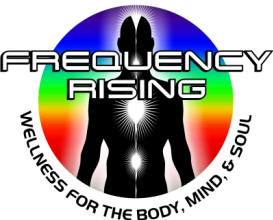|
|
|
Carbohydrates
|
|
CarbohydratesGoing with the (Whole) Grain
Carbohydrates are an important part of a healthy diet because they provide fuel for the body. Many foods rich in whole-grain carbohydrates are good sources of essential vitamins and minerals. What are Carbohydrates? Carbohydrates come from a wide array of foods - bread, rice, beans, milk, popcorn, potatoes, cookies, spaghetti, corn, and cherry pie. They also come in a variety of forms. The most common and abundant ones are sugars, fibers, and starches. The basic building blocks of a carbohydrate are sugar molecules. Starches and fibers are essentially chains of sugar molecules. Some contain hundreds of sugars. Some chains are straight, others branch wildly. Carbohydrates were once grouped into two main categories. Simple carbohydrates included sugars such as fruit sugar (fructose), corn or grape sugar (dextrose or glucose), and table sugar (sucrose). Complex carbohydrates included everything made of three or more linked sugars. Simple sugars were considered bad and complex carbohydrates good, but the picture is much more complicated than that. The digestive system handles all carbohydrates in much the same way - it breaks them down (or tries to break them down) into single sugar molecules, since only these are small enough to absorb into the bloodstream. It also converts most digestible carbohydrates into glucose (also known as blood sugar) because cells are designed to use this as a universal energy source. Fiber is an exception. It is put together in such a way that it can't be broken down into sugar molecules, and so passes through the body mostly undigested. Carbohydrates and the Glycemic Index A new system for classifying carbohydrates calls into question many of the old assumptions about how carbohydrates affect health. This new system, known as the glycemic index, measures how fast and how far blood sugar rises after you eat a food that contains carbohydrates. White bread, for example, is digested almost immediately to glucose, causing blood sugar to spike rapidly. So white bread is classified as having a high glycemic index. Brown rice, in contrast, is digested more slowly, causing a lower and more gentle change in blood sugar. It has a lower glycemic index. The most comprehensive list of the glycemic index of foods was published in the July, 2002, issue of the American Journal of Clinical Nutrition. A searchable database maintained by the University of Sydney is available online. Diets filled with high-glycemic-index foods, which cause quick and strong increases in blood sugar levels, have been linked to an increased risk for both diabetes and heart disease. On the other hand, lower GI foods have been shown to help control type 2 diabetes. One of the most important factors that determine a food's glycemic index is how highly processed its carbohydrates are. Processing carbohydrates removes the fiber-rich outer bran and the vitamin- and mineral-rich inner germ. What's left is mostly the starchy endosperm. (See Fiber for more information on whole-grain foods.) Other factors that influence how quickly the carbohydrates in food raise blood sugar include:
These combine to create sometimes counterintuitive results. Some foods that contain complex carbohydrates, such as potatoes, quickly raise blood sugar levels, while some foods that contain simple carbohydrates, such as whole fruit, raise blood sugar levels more slowly. Although the fine points of the glycemic index may seem complicated, the basic message is simple: Whenever possible, replace highly processed grains, cereals, and sugars with minimally processed whole-grain products. And only eat potatoes - once on the list of preferred complex carbohydrates - occasionally because of their high glycemic index. When Sugar Management Goes Awry Digestible carbohydrates are broken down in the intestine into their simplest form, sugar, which then enters the blood. As blood sugar levels rise, special cells in the pancreas churn out more and more insulin, a hormone that signals cells to absorb blood sugar for energy or storage. As cells sponge up blood sugar, its levels in the bloodstream fall back to a preset minimum. So do insulin levels. In some people, this cycle doesn't work properly. People with type 1 diabetes (once called insulin-dependent or juvenile diabetes) don't make enough insulin, so their cells can't absorb sugar. People with type 2 diabetes (once called non-insulin dependent or adult onset diabetes) usually start out with a different problem - their cells don't respond well to insulin's "open up for sugar" signal. This condition, known as insulin resistance, causes both blood sugar and insulin levels to stay high long after eating. Over time, the heavy demands made on the insulin-making cells wears them out, and insulin production slows, then stops. Insulin resistance isn't just a blood sugar problem. It has also been linked with a variety of other problems, including high blood pressure, high levels of triglycerides, low HDL (good) cholesterol, heart disease, and possibly some cancers. Genes, a sedentary lifestyle, being overweight, and eating a diet filled with foods that cause big spikes in blood sugar can all promote insulin resistance. Data from the Insulin Resistance Atherosclerosis Study suggests that cutting back on refined grains and eating more whole grains in their place can improve insulin sensitivity. No Carbohydrates? Some popular diets, particularly the Atkins diet, treat carbohydrates as if they are evil, the root of all body fat and excess weight. While there is some evidence that a low-carbohydrate diet may help people lose weight more quickly than a low-fat diet, no one knows the long-term effects of eating little or no carbohydrates. Equally worrisome is the inclusion of unhealthy fats in some of these diets. If you want to go the lower carb route, try to include some fruits, vegetables, and whole-grain carbohydrates every day. They contain a host of vitamins, minerals, and other phyto-nutrients that are essential for good health and that you can't get out of a supplement bottle. Adding Good Carbohydrates Carbohydrates from fruits, vegetables, and grains should give you the bulk of your calories. For optimal health, get your grains intact from foods such as whole wheat bread, brown rice, whole-grain pasta, and other possibly unfamiliar grains like quinoa, whole oats, and bulgur. Not only will these foods help protect you against a range of chronic diseases, they can also please your palate and your eyes. Until recently, you could only get whole-grain products in organic or non-traditional stores. Today they are popping up in more and more mainstream grocery stores. Here are some suggestions for adding more whole grains to your diet:
Popular Diets A number of popular diets focus on carbohydrates. Some demonize them, and warn against eating any carbohydrates. Others emphasize a high carbohydrate intake. Taking in the right type and amount seem to be far more important to the core issue. High carbohydrate/low fat (Ornish, Pritikin, and Food for Life diets) For years we've been hearing that eating a healthy diet means cutting back on the total amount of fat and eating more complex carbohydrates. Thousands of "low-fat" alternatives now crowd the supermarket shelves. But is simply cutting back on fat and loading up on carbohydrates a healthy way to eat or to lose weight? Current research suggests that it isn't. Just as researchers learned that not all types of fat are bad, they're also discovering that not all types of carbohydrates are good. It's easy to fall into the low-fat trap. Gram for gram, fat has more than twice as many calories as either protein or carbohydrates. So it seems logical that choosing low-fat products would help with weight loss. Yet all too often the low-fat products on supermarket shelves are packed with sugar and highly processed carbohydrates to make up for the taste that's lost when fat is removed. These low-fat alternatives often have just as many calories as the full-fat versions, and may even have more! Another problem is that many people mistakenly think that because a food is low in fat they can eat as much of it as they want without gaining weight. As far as the body is concerned, though, calories are calories, no matter where they come from. Eat too many calories (whether from fat, carbohydrates, or protein), and you'll gain weight. Aside from weight loss, the popularity of low-fat food has broader implications for health. Commercially prepared low-fat foods tend to be rich in highly processed carbohydrates, which cause big spikes in blood sugar. As described in the section on the glycemic index, over time this can increase the chances of developing heart disease and diabetes. For example, in a study of 80,000 nurses, Harvard researchers calculated that replacing a given number of calories from polyunsaturated fat with an equivalent number from easily digested carbohydrates increased the risk for heart disease by over 50 percent. And other studies have found that a low-fat, high-carbohydrate diet, particularly one high in sugars, can worsen blood cholesterol and triglycerides levels, both of which are risk factors for heart disease. Low carbohydrate/high protein (The Zone, Atkins, South Beach, and other diets) For more than two decades Dr. Robert Atkins preached and sold the gospel of "protein is good, carbohydrates are evil." Until recently, this line of thinking was beyond the pale. Now, though, there is some new evidence to back the idea that a high-protein, low-carbohydrate diet may help people lose weight. Whether such a diet that also includes bacon, steaks, butter, cheese, and other foods with plenty of saturated fat is good for overall health is another matter. In theory, a high-protein/low carbohydrate diet could help increase satiety, that feeling of fullness that comes with eating. Fewer carbohydrates could also avoid fast and high rises, and falls, in blood sugar, which may also keep hunger at bay. Together, these could help you avoid overeating and make you satisfied with fewer calories. That's the theory. Unfortunately, there are few good long-term studies to test it. In a review of low-carbohydrate diets, researchers found 107 that met their criteria; only five lasted longer than three months. These short-term studies showed that low-carbohydrate diets were safe in the short term, but that weight loss was due mostly to reduced caloric intake, not necessarily to the low-carbohydrate nature of the diets. Such reductions often happen when people drastically change what they eat. Two year-long studies published in the New England Journal of Medicine suggests that the benefits of a low-carbohydrate diet may last for six months or a year. These studies compared high-fat, high-protein, low-carbohydrate diets with low-fat, moderate-protein, high-carbohydrate diets. In both studies, the low-carb approach produced more weight loss at six months, but by the end of a year weight loss was similar with both diets. Apart from the uncertainty about their ability to maintain weight loss, high-protein diets could cause long-term problems. Many of the high-protein foods that people choose while on this type of diet (red and processed meats, cheese, and full-fat dairy products, for example) are high in saturated fat and low in vitamins and minerals. This may increase the risk for heart disease and colon cancer. Diets very high in protein (especially animal protein, like red meat) may also increase the risk for osteoporosis in women because the body takes calcium from the bone to neutralize the acids that build up in the blood as a result of digesting large amounts of protein. Until more is known about the true risks and benefits of high-protein/low-carbohydrate diets, they should be viewed with caution. Keep protein intake at moderate amounts (about 8 grams a day for every 20 pounds of body weight). Vegetable protein is a better choice than animal protein. And don't skimp on the healthful carbohydrates such as whole grains, fruits, and vegetables. These should still make up a large part of the diet.
| ||




 We've come a long way from the days when one of the knee-jerk answers to the question "What's a healthy diet?" was "Get a lot of carbohydrates." We now know that the staple of most diets, carbohydrates, aren't all good or all bad. Some kinds promote health while others, when eaten often and in large quantities, may increase the risk for diabetes and coronary heart disease.
We've come a long way from the days when one of the knee-jerk answers to the question "What's a healthy diet?" was "Get a lot of carbohydrates." We now know that the staple of most diets, carbohydrates, aren't all good or all bad. Some kinds promote health while others, when eaten often and in large quantities, may increase the risk for diabetes and coronary heart disease. 